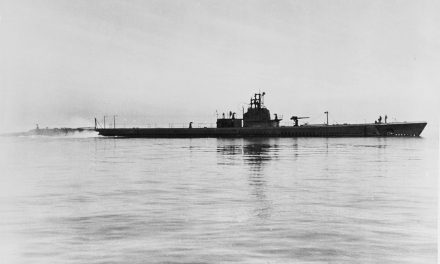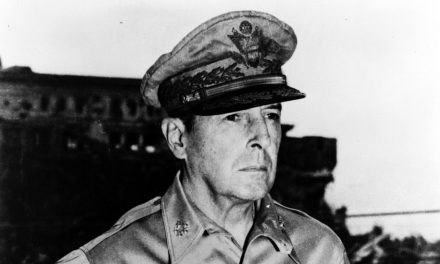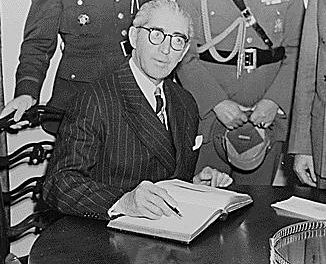Six months after Japan’s brutal attack on Pearl Harbor, the U.S. Navy has defeated the Japanese fleet at Midway Island in the Pacific. The battle started on June 4 and lasted four days, after which the U.S. was able to claim victory.
Only limited details of the battle are available at this time, however it has been confirmed that three Japanese aircraft carriers have been sunk; another two carriers were reported damaged. Japan also lost three battleships, three transports, four cruisers and several planes. These naval casualties, taken together with the losses Japan has suffered in other recent battles (in the Coral Sea and elsewhere in the Pacific), mean the Japanese navy has taken a hard hit.
A German Transocean broadcast recorded a Tokyo newspaper stating: “One cannot always expect victories, but must also be able to stand losses. The Japanese Commander in Chief… received the news of the loss of two of his vessels quite calmly. Every leader of a great fleet must show similar calm.”
Even with the recent destruction of various warships and planes, the Japanese still have a larger naval force than the U.S. However, with more territory to cover and fewer vessels available, it would be nearly impossible for Japan to concentrate the entirety of its navy on a single, concentrated attack against the Allies. This helps put the U.S. in a much stronger position.

USS Yorktown and USS Enterprise dive bombers attacking Japanese aircraft carriers during the Battle of Midway. From Wikimedia Commons.
This battle is being viewed (and celebrated) as the first great victory for the Allies since the U.S. entered the war in December 1941. What makes the battle even more significant is that it took place relatively close to Pearl Harbor, and culminated on the six-month anniversary of the surprise attack by the Japanese on the U.S. Since that day at Pearl Harbor, many Americans have been waiting for the chance to strike back – and the victory at Midway proved to be the retribution the country needed.
“A momentous victory is in the making,” said Admiral Chester W. Nimitz, commander of the United States Pacific Fleet. “Pearl Harbor has now been partially avenged.”
After the recent string of Allied losses, a big win is exactly what was needed to raise morale – for those actively involved in the war and those watching (and waiting) desperately from the sidelines. The U.S. citizens at home finally get to see their country hit back and succeed after months of defeat.
It will take the Japanese months, if not longer, to replace all the ships and planes lost in the battle at Midway Island. Perhaps equally important, this battle proves that Japan is not invincible—this American victory in the Pacific may very well be a turning point in the Second World War.
Sources
“A MOMENTOUS VICTORY.” (1942, June 8). New York Times, p. 14.
Clausen, W. B. (1942, June 7). “One U.S. Carrier Damaged; Our Forces Still Battering Fleeing Enemy; Wounded Jap Vessels Far From Base.” The Washington Post, p. M1.
Lindley, E. (1942, June 10). “Midway Battle: Small Aircraft Carriers.” The Washington Post, p. 9.
“Midway Victory.” (1942, June 8). The Washington Post, p. 8.
Norris, J. G. (1942, June 6). “Enemy Repulsed, Says Nimitz but Great Victory Is Not Yet Won.” The Washington Post, pp. 1-2.
“TOKYO PRESS HINTS AT MIDWAY DEFEAT.” (1942, June 10). New York Times, pp. 1-6.





